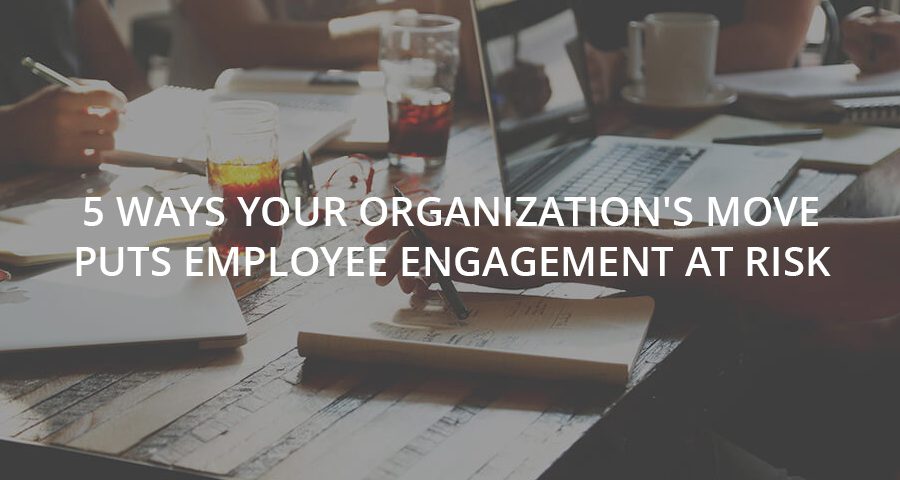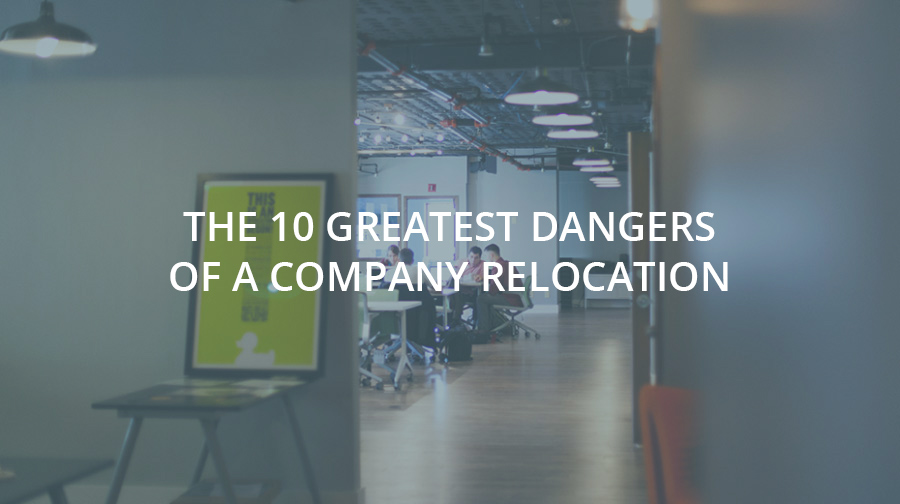5 ways your organization’s move puts employee engagement at risk (and what to do about it)

Case Study:
Insurance Client
May 5, 2016
Case Study:
Accreditation Council for Graduate Medical Education
October 19, 2016Assets move. People transition.
If your company’s planning a relocation, it’s important to understand the difference between relocating assets and relocating employees. You can open a new office or workshop with every physical object in its right place – but if employee hearts and minds aren’t with you too, the move won’t be successful in the long term.
More than 70% of efforts at major organizational change are failures – and lack of employee engagement is a major cause. Here are 5 risks to watch out for as your organization gets ready for the biggest change of all: a relocation.
1. Loss of trust in leadership.
Leaders are the first to know about a relocation – and the first to adjust to this new vision for the future. If employees aren’t given the same chance to transition, they could feel ignored or left out of the process. The result? A cultural sense that leadership doesn’t care about the folks it’s leading.
For a healthier transition, develop a strong communication plan well in advance of your move - and make sure leadership is personally involved at key points of the communication process. Formats like question-and-response can allow for employee interaction with leaders and build greater sense of trust and transparency.
2. Loss of productivity.
A new work environment means new daily habits. These can be as simple as a new route to the bathrooms or a new way to access the office after hours – or as complex and proprietary as a newly structured manufacturing process to suit your new physical workshop layout.

3. Loss of customer focus.
Are you more or less productive when you’re hungry? What about when you’ve missed a night’s sleep?
It’s the same way with our psychological needs. If employees feel uninformed, untrained or unprepared for relocation, it’s going to be vastly more difficult for them to focus on customer needs and problems. Providing a poor employee experience is a great way to provide a poor client experience as well.
4. Loss of emotional and even physical health.
One difference between a move and a transition: transitions take time. No matter how they ultimately feel about the move, employees will go through a range of emotions as they process and adjust to this change. Employees who aren’t given enough information, or who aren’t informed early enough, will experience additional anxiety, anger, fear and stress.
That can affect your client experience, as we noted above - but it can also affect employee performance and lead to increased sick days and "mental health days." Multiply that times hundreds or thousands of employees at once, and you’re looking at a risk not only to individuals but to your organization's bottom line.

5. Loss of employees.
If the changes brought on by your relocation are significant, there’s a chance that not every employee will be willing to make them with you. Fail at any of the factors above, and your chances of retaining great employees become worse.
If you want to keep your most important asset – great people – then a strong communications plan, thoughtful employee care and effective transition management should be non-negotiables.
The risks above are real – but relocation is a coin with two sides. Just as moving can damage employee health, reduce trust in leadership, hurt productivity, damage the customer experience and cost you good employees… it can also have the opposite effect.
That’s because your relocation is an opportunity for transformation. You may never again capture the attention of employees to the same extent as during your journey of relocation. Journey well together, and you can arrive with greater trust, stronger engagement – even a renewed organizational culture.
At Carter, we call the part of your relocation that focuses on employee engagement transition management – and it’s what we do for a living. If you’re beginning the journey, we’d love the opportunity to serve as your guide.


